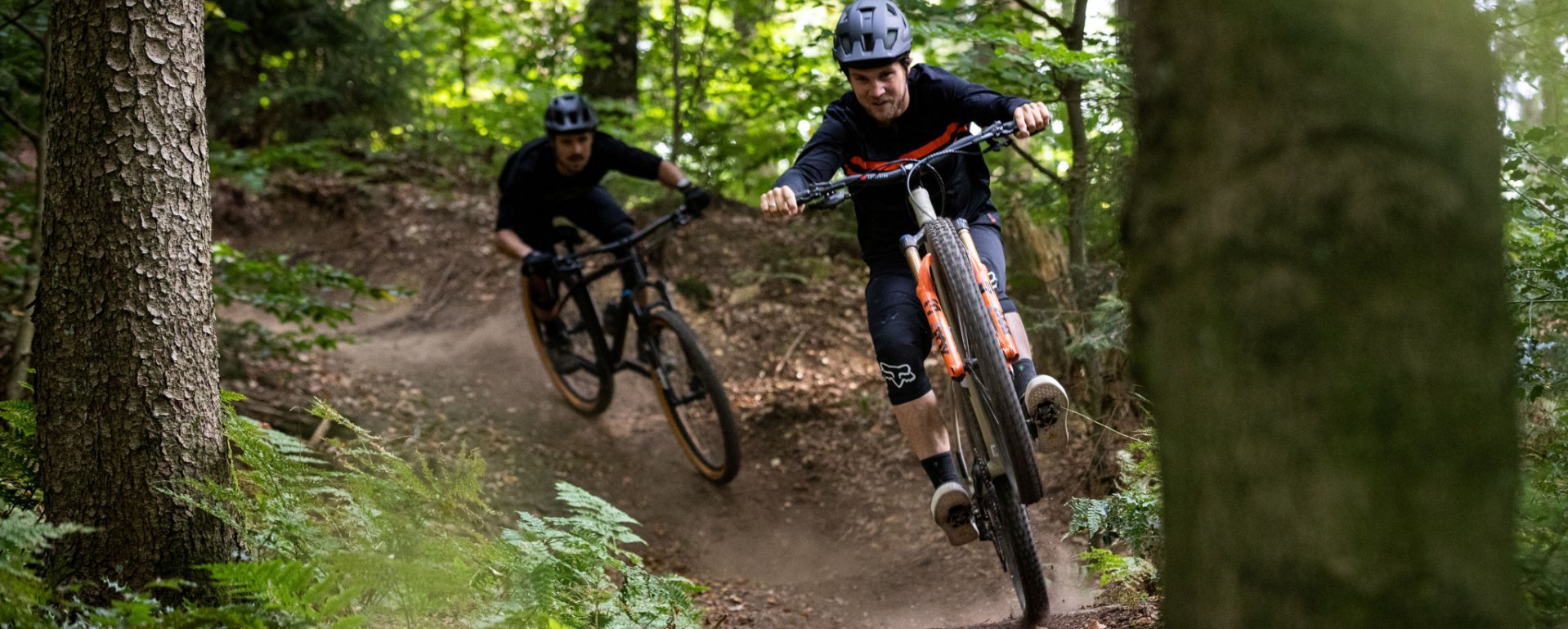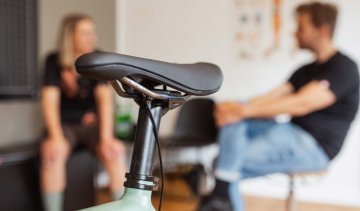
Product test: Thermoformable bike saddles from ...
A bike saddle that adapts to your anatomy? We have tested the thermoformable saddles from REFORM for you, which promise exactly that.
Handlebar grips are a decisive factor in the ups and downs of cycling. Depending on the area of use, the requirements for a grip are very different.
Along with the saddle and pedals, your bike’s grips are one of the three points of contact between the cyclist and the bike. Depending on your riding style, discipline and intended use, you can choose from a wide range of products. Ergonomic aspects are the decisive factor here. You truly have experienced it yourself: sometimes, even on short distances, your hands go numb or fingers fall asleep – and your performance starts to stutter. For greater strength and endurance on your tours, finding the appropriate grips can help.
Every cyclist is different and has their own preferences when it comes to grips. With that in mind, there are different shapes and designs to relieve the hand as much as possible: oval grips, wing grips, grips with different diameters, with or without clamps, and so on. Then there are specialists like SQlab or Ergon who offer ergonomically-adapted comfort grips. In general, however, it is always about the combination of performance and comfort. But even here, the demands differ quite a bit depending on the area of use: a cross-country rider will tend to prefer a thin grip, while an enduro rider will often prefer a soft grip with higher vibration damping. Touring riders tend to take advantage of the ergonomic benefits of wing grips, although they are completely counter-productive for downhill riding. In short, the more challenging the terrain, the more important it becomes to have full control and a firm grip on the handlebars.
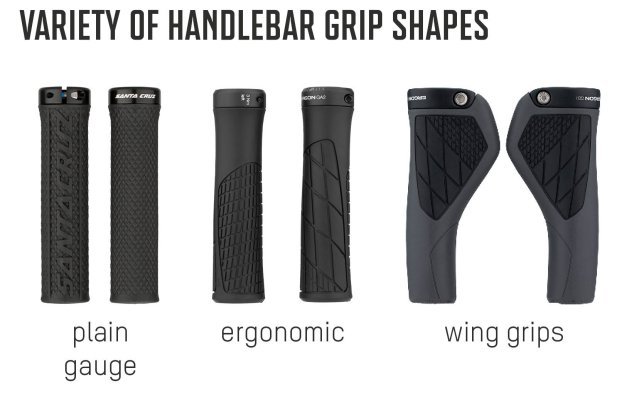
Most bicycle grips consist of a rubber upper material with a plastic core. The material is durable and has high vibration damping properties, such as the Death Grip from DMR Bikes. Depending on the material blend (and there are plenty) and personal feeling, the grip may also feel harder. Manufacturer Renthal offers its Lock On-Grip in five different rubber compounds – so you can choose according to your needs, whether you prefer more grip or longer durability. You can also opt for silicone-based grips from ESI without external clamps. They are lightweight and inexpensive, the material has good vibration damping properties with direct power transmission, and also adapts to your hand. In addition, the handles can be shortened to the desired length. Cork, a natural material, is also enjoying growing popularity. Special cork grips from Ergon are made up of about 40 percent organic cork. Leather grips such as the Slender from Brooks impress with their high breathability and durability. However, they are not without limitations and are more suited for city riding than for MTB use.
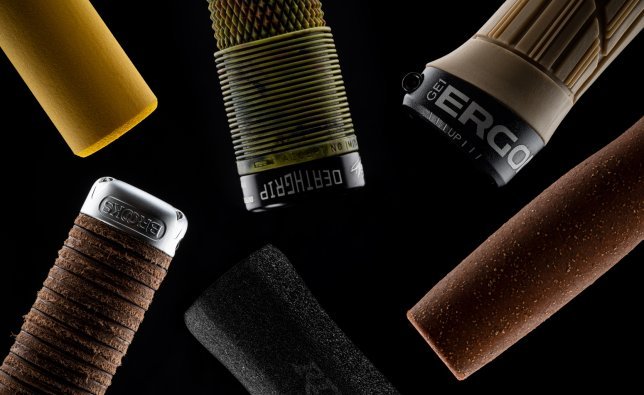
The grip material has a decisive influence on comfort and hold. © bc GmbH & Co. KG
Speaking of hold: different surfaces promise different degrees of hold on grips. Fine diamond textures, like on the Slater Lock On from SDG, still allow for a good degree of control even with wet hands or without gloves, but wear out faster. Alternatively, you can use a grip with a neoprene covering, e.g. the WCS True Grip from Ritchey. Special indentations for the fingers or waffle designs ensure increased slip resistance on many grips. There are no creative limits here, so companies like Race Face or Sram that extend their product lines in the direction of grip design to give you the perfect grip. Ribbed profiles, like the Magic Grips from fabric, provide extremely good cushioning, but control fanatics may find fault with its particular sponginess. When deciding on a grip surface, whether or not you wear gloves can also play a role. If you don’t wear gloves, a non-slip surface with a high degree of cushioning and good moisture absorption is often the most comfortable.
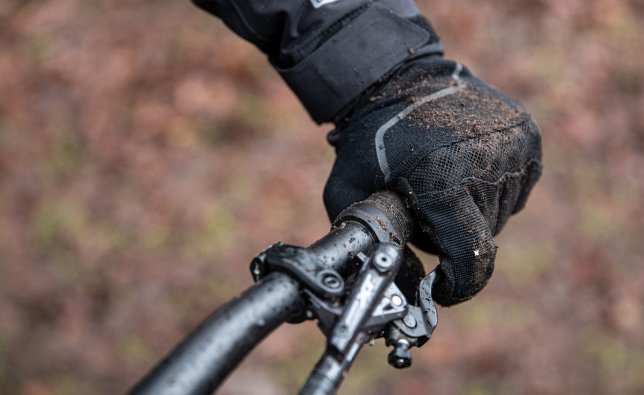
With or without? Gloves provide additional grip and cushioning. © bc GmbH & Co. KG
Some grips are offered in different diameters, usually between 30 and 35 millimetres, sometimes denoted in sizes such as S, M or L. The choice depends on hand size and your personal preferences. Heavily-padded gloves and thick grips are often a bad combination because they require a lot of gripping force, which can lead to fatigue and hand cramping. Small hands and thick handles are also not ideal for the same reasons. However, too small of a grip can also lead to cramps. To address this issue, manufacturer SQlab offers a measuring template for determining the grip width, i.e. the distance between the tip of the middle finger and the crook of the thumb. You can also measure your hand length yourself at home with a piece of paper and a pen. Another way to determine grip size is to follow the size of your gloves. Some manufacturers go one step further and design their grips not round, but with different diameters to optimally reproduce the shape of the hand around the handlebar. Examples include Ergon’s GA2 and GE1, SQlab’s 711 Tech & Trail or the PRO Ergo Lock On Sport.
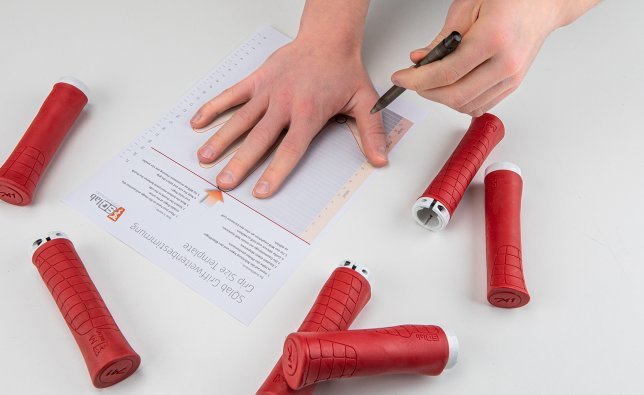
The SQlab measuring template lets you determine your individual grip width. © bc GmbH & Co. KG
On longer tours on either an MTB, touring bike or even e-bike, a lot of pressure can end up building on your hands. In particular, if you're focusing on athletic performance and are riding with a forward-bent position, your hands end up supporting a lot of your upper body weight on the handlebars. Since you don't really move your hands around during the ride, this puts a lot of consistent pressure on the small surface area of the grip. This causes a targeted pressure load, which can then lead to hand numbness. To prevent this from happening, there are specially-shaped comfort grips, which demonstrates that the distinction between variable shaping and comfort grip is rather fluid.
A common problem with travelling long distances is the high amount of pressure put on the sensitive ulnar nerve. This runs along the ball of the little finger, just below the surface of the skin. Too much stress on the outside of the hand causes numbing on the ring or pinky finger. One solution is to replace a conventional grip with a wing grip with palm rest, like what Ergon, SQlab or Contec have in their range. The contact area and thus the contact surface of the hand is increased, and pressure is better distributed as a result. If, on the other hand, pain occurs in your index and middle fingers or even your thumb, too much pressure on the exit of the carpal tunnel may be the cause. Your wrist is bent too much, which compresses the nerves. In particular, when you grow tired on longer rides, it becomes difficult to keep your hand in the ergonomically correct position. The wrist bends downwards, and the hand becomes numb. This results in carpal tunnel syndrome. Again, a wing grip can provide support and keep the wrist in the correct ergonomic position. Grips like the GS1 from Ergon are specially-designed for long distance mountain biking. For mountain bikers, it is also true that if the wing is too big, the off-road capability suffers. This is why there are different available wing sizes, which can be found on the Ergo Lock-On from 3min19sec or the GA3 from Ergon.
Many grips are now bolted on rather than simply plugged into the handlebars. The bolts simplify adjustment and hold the grips better in position – an important factor especially for comfort grips. In order to benefit from the ergonomic advantage, the support surface must be adjusted so that the wrist does not bend on the handlebars. It describes a straight line from the hand to the forearm. For example, a special Fitting Box from Ergon helps with adjustment. If you like to grip the outside of the handlebars, grips with an internal clamp are a good choice. That way, you don't have to reach for a hard piece of metal. If you prefer to hold onto the middle, you’re better off using an outside clamp. Clamps on both sides allow for a secure hold on rough downhill descents without stressing carbon handlebars with too much torque. Speaking of carbon, it is important to observe the torque specifications of the manufacturer when screwing on the grips. A grip that is too loose can quickly become a fall hazard, and one that is too tight can damage the handlebars. Suitable tools such as a torque wrench are recommended for this instance.
Bar ends help take the pressure off your wrist. They are either included directly on the handle or you can retrofit them if needed. They are mounted on the outside of the handlebar and come in different sizes and shapes. This way, you can easily change your grip position while riding. This is especially interesting when driving uphill, because muscles and nerves are relaxed. For hand relief and more pressure on the front wheel, SQlab offers Inner Bar Ends. These are mounted between the handle and the gear shift at about shoulder width. Another way to take the strain off your wrists is to swap handlebars. comfort handlebars with a backsweep from approx. 12 degrees allow for an ergonomically-optimized sitting position.
